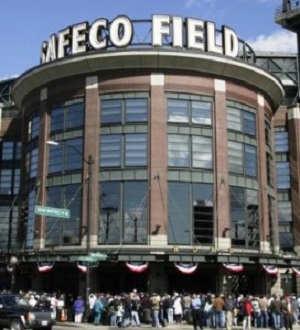07 Nov Summit at Safeco
A New Equation?
About 670 local elected leaders possess authority to tap the property tax base of King County to fund local infrastructure and government services. Only five – that’s 5 – are primarily focused on economic development.

Ellis Pavilion
November 19, 2:00 – 5:00 p.m.
Presentations, tour, social hour
RSVP to tory@box2063.temp.domains
That tiny band is comprised of the Seattle Port Commission.Their leadership cluster could double in size to 10 members if the new Seaport Alliance is created to unify marine cargo operations under the leadership of the elected port commissioners for Tacoma and Seattle.
If it comes together, the Seaport Alliance would end decades of competition between the two ports for Puget Sound marine cargo business.
Perhaps more importantly, it could also provide a new basis for leadership on the nuts-and-bolts of regional prosperity. Those issues probably seem obvious, but they often get lost in the depth, breadth, diversity and sheer ungainliness of our local political landscape.
In King County alone, that landscape includes about 40 city governments and nearly 100 school districts along with sewer, fire and water districts, each one governed by a board of independently elected local representatives.
It’s a great system to nurture and sustain the local neighborhoods where we live. It’s not so great for pulling together the regional resources required to compete in the global marketplace.
The Seaport Alliance could add a much stronger regional focus on those needs.
The two elected port commissions for Seattle and Tacoma do not just represent the waterfront. They are elected countywide by voters in King and Pierce Counties. Those two counties account for a major share of the Washington state industrial base. Industrial companies in both counties face shared concerns for freight infrastructure, environmental cleanup and workforce education, among other issues. Those challenges all require stronger partnerships between local, state and federal leaders.
If the two port commissions can implement a shared agenda to address those challenges, the value of the new Seaport Alliance might far surpass the scale of the marine cargo sector that inspired its creation.
As Aristotle might have put it, the Seaport Alliance “whole” would be greater than the sum of its parts. Or, as new Seattle port CEO Ted Fick puts it: “The Seaport Alliance is a game changer. The new equation is 2+2 equals five.”
Promising Initiatives
The Seaport Alliance is one of several promising initiatives to support industrial jobs and business growth that will be highlighted at the Summit at Safeco: Building Prosperity in the Pacific Gateway.
Others include the new Maritime Manufacturing Task Force of the Washington State Legislature, tasked with researching ways the state can better support the state industrial base with a focus on maritime-related sectors.
The legislature is also home to a new bi-partisan Railroad Caucus of elected representatives from throughout the state who are looking for ways to meet statewide needs for rail-related transportation improvements.
The new regional initiatives coincide with a new commitment by Seattle Mayor Ed Murray to pull together a freight master plan for the city.
Hosted by the Seattle Mariners, the Summit at Safeco is cosponsored by the Manufacturing Industrial Council of Seattle, the Duwamish Transportation Management Association and the Seattle Leadership Forum of the Pacific Northwest Economic Region (PNWER) in partnership with the Cascadia Academy.
The PNWER leadership forum is a regional conference in Seattle that will focus on public-private partnerships in Canada that in recent years succeeded in funding 17 freight overpasses and related projects in a 44-mile corridor that serves the Delta marine cargo terminals just south of Vancouver. Those projects cost about $700 million.
The Delta port investments combine with those at the new Prince Ruppert seaport in north B.C. to draw marine cargo traffic that might otherwise sail into Puget Sound.
The summit at Safeco Field provides an ideal setting to help put the Canadian developments into a local context. From the stadium upper deck, summiteers will get a bird’s eye view of two case studies – one good, the other instructive.
The Tale of Two Overpasses
The view west from Safeco looks out on a brand new, sprawling overpass that was recently planned and built by the State of Washington Department of Transportation. It cost $40 million.
Nicknamed the “Little H,” the overpass permits trucks and other vehicles (and cyclists) to travel up and over a “tail track” used for railroad operations between 1st Avenue South, and the marine cargo terminals along East Marginal Way on Elliot Bay.
From the perspective of the Little H, local prospects look good for enhancing freight infrastructure, Canadian-style.
The view south from Safeco is more challenging. South of Safeco, you can often see seagulls circling in the air above the giant garbage recycling yard located in central SODO. What you don’t see is the long-planned Lander Street Overpass. This City of Seattle Department of Transportation project remains unbuilt after spending nearly 20 years on the drawing board.
Estimated costs for the Lander Street overpass started out around $24 million. By 2003, cost estimates climbed to $38 million.
By 2007, cost estimates nearly doubled to $71 million, in part to meet requirements of the city’s “Complete Streets” policy to incorporate improvements for pedestrians and cyclists.
By 2008, that estimate more than doubled to $185 million, apparently because of unexpected costs for utility relocations and soil stabilization.
At that price tag, the project will probably never be built. It’s too lavish by regional standards for freight investments and way too expensive to be built as a city project.
In 2012, former Mayor Mike McGinn told an industrial group he couldn’t support spending $185 million for the Lander Street project. Even if he had the money, McGinn said, it would be better used to address other unmet transportation needs in the city benefiting more people. And, from that perspective, Mayor McGinn was probably right.
Unfortunately, the failure to build Lander Street adds to growing conflicts in SODO between heavy gauge and light rail train traffic and vehicles. That’s a regional issue for freight mobility.
Ironically in terms of Complete Streets, it is also a local issue for safety. People can, and do, get killed in SODO’s multi-modal traffic mix and Lander Street can be hazardous for pedestrians and cyclists who are required to cross mainline heavy gauge and light rail tracks for passengers and freight.
Leadership
While the Canadian projects are impressive, our region summoned up a similar effort 20 years ago to plan and fund an initiative called the FAST Corridor partnership (FAST stood for Freight Action Strategy). It brought together local and regional elected officials with the railroads to build 20 freight projects along I-5 costing about $651 million.
The FAST planning cycle has drawn to a close, but it shows what can be possible through initiatives such as the Seaport Alliance, the Rail Caucus and the Maritime Manufacturing Task Force.
The initiatives can claim one success already.
You reached this far in an article about regional economic development before you encountered the word “aerospace.”
Make no mistake about it. Aircraft manufacturing still leads the herd of our industrial cash cows. But it is one part of a larger group that contributes to our economic well being.
At the summit, you’ll meet some of the unsung elected leaders who want to keep the herd growing (and moving).
A bi-partisan welcome will be provided by Clare Petrich, president of the Tacoma Port Commission, and Bill Bryant of the Seattle Port Commission. Seattle Port Commissioner Stephanie Bowman will also speak.
State leaders will include Representatives Luis Moscoso, a Democrat from Snohomish County, and Matt Manweller, a Republican from Ellensurg. They co-chair the new rail caucus.
Rep. Gael Tarleton, a Democrat from Ballard, will lead the presentation about the state Maritime Manufacturing Task Force. A former Seattle port commissioner, Tarleton co-chairs the task force and sponsored the legislation that created it.
Admission is free, as is parking, but RSVPs are required and seating is limited. RSVP to Tory@box2063.temp.domains. Questions? Call 206-762-2470.
